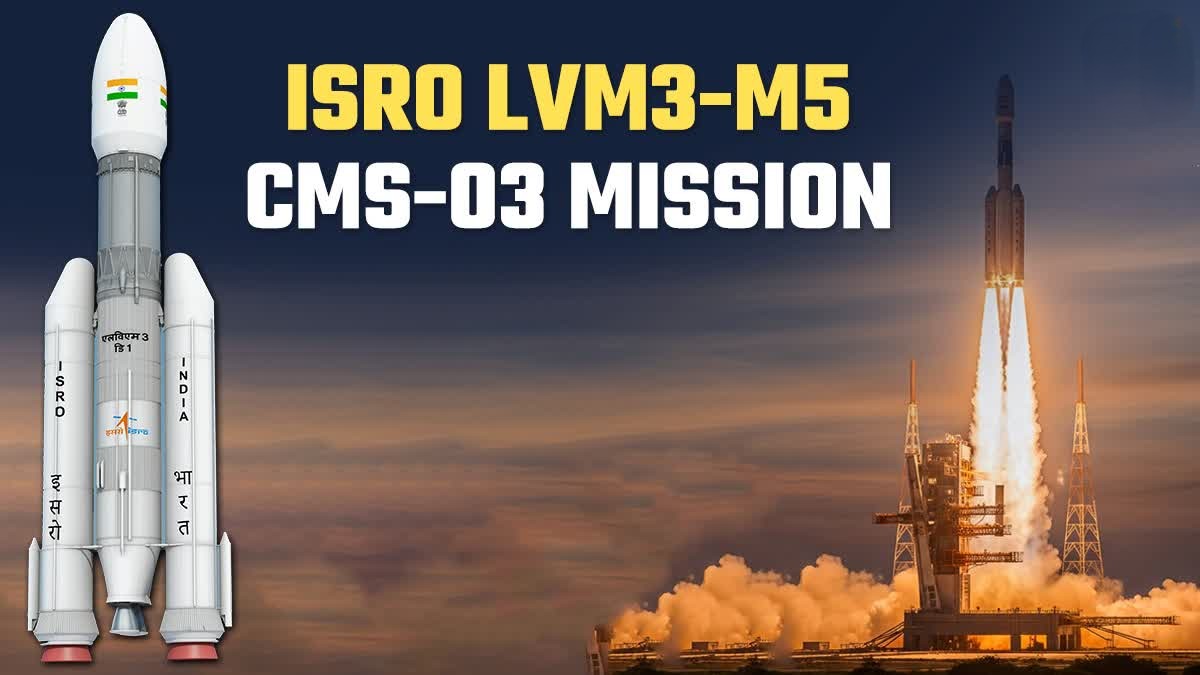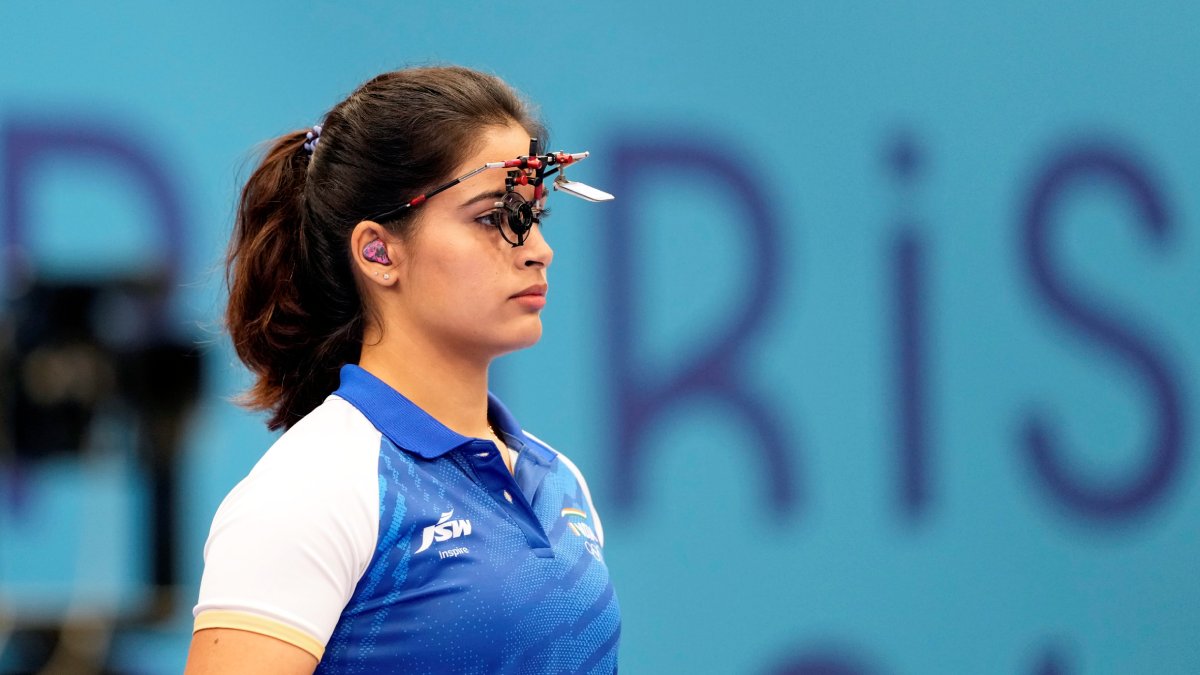On a warm November evening in 2025, the sky over Sriharikota lit up with a golden glow as India’s most powerful rocket, the LVM3-M5, roared to life. The thunderous sound of its engines echoed across the coast, carrying with it not just fire and smoke — but the pride and dreams of an entire nation.
Inside that rocket was a very special passenger — CMS-03, India’s heaviest-ever communication satellite. When it successfully reached its orbit, India made history once again, proving to the world that its space program is stronger, smarter, and more self-reliant than ever.
1. A New Milestone in India’s Space Journey
On November 2, 2025, at exactly 5:26 PM, ISRO launched the CMS-03 satellite aboard the LVM3-M5 rocket from the Satish Dhawan Space Centre in Sriharikota, Andhra Pradesh.
Within just 16 minutes, the rocket placed the satellite into a Geosynchronous Transfer Orbit, the first step toward reaching its final home — about 36,000 kilometers above Earth.
As soon as the confirmation came in that the mission was successful, the entire control room at ISRO erupted in applause. Smiles, tears, and hugs filled the air — because this was not just a successful mission. It was a proud moment for every Indian who believes in the power of science and self-reliance.
2. What is CMS-03?
The CMS-03, sometimes called GSAT-7R, is a multi-band communication satellite built entirely in India. Weighing about 4,410 kilograms, it’s the heaviest communication satellite that ISRO has ever launched from Indian soil.
This satellite isn’t just about weight — it’s about purpose. It’s designed to provide high-speed communication for India’s defense forces, particularly the Indian Navy, and to improve connectivity across the country and surrounding ocean areas.
CMS-03 will orbit the Earth in a geostationary orbit, meaning it will remain fixed above a specific point on Earth’s surface. This allows for constant communication coverage — especially crucial for ships, submarines, and aircraft that need stable connections across the vast Indian Ocean Region.
3. The Power Behind the Mission — LVM3, the “Bahubali” Rocket
To carry such a heavy satellite, ISRO used its most powerful rocket — the LVM3, affectionately called Bahubali for its incredible strength.
Here’s a simple look at what makes LVM3 special:
- It stands about 43.5 meters tall — roughly the height of a 15-story building.
- It weighs around 640 tonnes when fully loaded.
- It can carry up to 4.5 tonnes to a geosynchronous orbit.
- It has three stages — two massive solid boosters, a liquid-fueled core stage, and a cryogenic upper stage.
This rocket has already carried out some of India’s most prestigious missions — including Chandrayaan-3 (the Moon landing mission) and commercial launches for foreign clients. With CMS-03, it proved that India can now handle even the heaviest satellites without relying on any other country’s launch services.
4. Why India Launched CMS-03
Every satellite has a mission. CMS-03’s mission is to make India better connected, more secure, and more self-reliant.
a) For National Security
The main goal of CMS-03 is to enhance the communication network of the Indian Navy. It ensures that ships, submarines, and aircraft can stay connected no matter where they are — even thousands of kilometers out at sea. It helps in real-time sharing of data, voice, and video, which is vital for defense operations.
b) For Civilian Use
Beyond defense, CMS-03 will also improve civilian communications:
- Providing reliable signals for remote coastal and island areas
- Supporting telemedicine, online education, and disaster management
- Helping ships and fishing boats stay connected during long voyages
c) For the Future
CMS-03 is a foundation for future satellites that will make India’s digital and defense networks even stronger. It represents a future where India controls its own communication backbone, free from foreign dependence.
5. The Countdown to History
The road to launch began weeks earlier. Engineers worked day and night at Sriharikota to prepare the rocket and satellite.
The final countdown started 24 hours before liftoff. Engineers tested every system, filled cryogenic fuel tanks, and made sure the weather was perfect. Finally, when the clock hit 5:26 PM, the engines fired — and India’s “Bahubali” lifted off the pad, carrying the heaviest satellite the nation has ever produced.
The world watched as the rocket soared higher and higher. Just 16 minutes later, CMS-03 was released into orbit — right on target. Cheers, applause, and tears of joy filled the control room. Another feather was added to India’s space crown.
6. From Small Steps to Giant Leaps
India’s space journey started humbly in the 1960s, with small rockets and sounding missions. But over time, ISRO has grown into a global powerhouse.
From launching the Aryabhata satellite in 1975 to sending Chandrayaan-3 to the Moon and Mangalyaan to Mars, India has achieved things once thought impossible.
However, for years, India depended on foreign rockets to launch heavy communication satellites. Missions like GSAT-11 had to be launched from French Guiana using European rockets. That dependency is now ending.
With LVM3-M5 and CMS-03, India has shown the world that it can now launch its heaviest satellites independently, saving millions in cost and gaining full control over its missions.
7. Why This Mission is So Important
The success of CMS-03 matters on multiple levels.
Self-Reliance
It’s a step toward Atmanirbhar Bharat — a self-reliant India. ISRO built both the rocket and satellite using homegrown technology, materials, and expertise.
Security and Sovereignty
In today’s world, information is power. Having a dedicated, secure communication satellite for the Navy ensures that sensitive military data stays within India’s control.
Better Communication for Everyone
From remote islands to coastal villages, CMS-03 will strengthen India’s communication network, helping connect every corner of the nation.
Boost to the Economy
By mastering heavy satellite launches, India can now offer commercial launch services to other countries — bringing valuable foreign exchange and global recognition.
8. The Technology Inside CMS-03
CMS-03 is a technological masterpiece.
It carries multiple communication payloads that work in different frequency bands — C-band, Extended C-band, and Ku-band — enabling high-speed, high-quality communication across land and sea.
It’s powered by large solar panels that generate several kilowatts of energy, keeping it operational for at least 15 years. Its advanced propulsion system helps it maintain its exact orbit position.
And what makes it even more special? Every part — from structure to systems — was designed and built in India.
9. ISRO’s Growing Global Reputation
With each mission, ISRO continues to surprise the world with what it can achieve on a relatively small budget.
The CMS-03 mission not only cements India’s position as a global space leader but also showcases that Indian engineers and scientists can compete with the best in the world — with innovation, precision, and cost efficiency.
This success also opens up new business opportunities. Many countries and private companies now look to ISRO for launching their satellites, trusting India’s reliability and skill.
10. The Human Effort Behind the Mission
Behind every ISRO success is a team of thousands of brilliant minds — scientists, engineers, technicians, and ground staff who pour their passion and energy into making these dreams a reality.
For months, these teams worked round the clock — often missing family events, festivals, and sleep — to make sure every part of the rocket and satellite worked perfectly. Their dedication is what powers India’s space story.
11. What’s Next for ISRO
ISRO isn’t stopping here. The CMS-03 mission is just the beginning of a new chapter.
Here’s what’s coming next:
- Gaganyaan Mission: India’s first human spaceflight.
- Aditya-L2: Studying the Sun’s outer atmosphere.
- Shukrayaan: A mission to explore Venus.
- Next-gen communication satellites: Even larger, more powerful, and more efficient.
With each step, India moves closer to becoming one of the world’s top space powers.
12. Why This Matters to Every Indian
You might ask — “How does this affect me?”
The answer is: more than you think.
Here’s how:
- Stronger communication networks mean better internet and services even in remote areas.
- More accurate weather data and disaster alerts help save lives.
- Safer seas mean better support for fishermen and coastal communities.
- A stronger defense system keeps the country secure.
- And most importantly — every successful mission fills India with pride and confidence.
CMS-03 shows what we can achieve when science, hard work, and national vision come together.
13. A Symbol of Progress and Pride
The launch of CMS-03 is more than a technical success — it’s an emotional one.
It shows the power of Indian innovation, determination, and teamwork.
From a nation that once launched tiny satellites using borrowed technology, India has now built and launched its heaviest satellite, using its own rocket, from its own soil.
It’s a moment that defines how far India has come — and how much further it’s ready to go.










